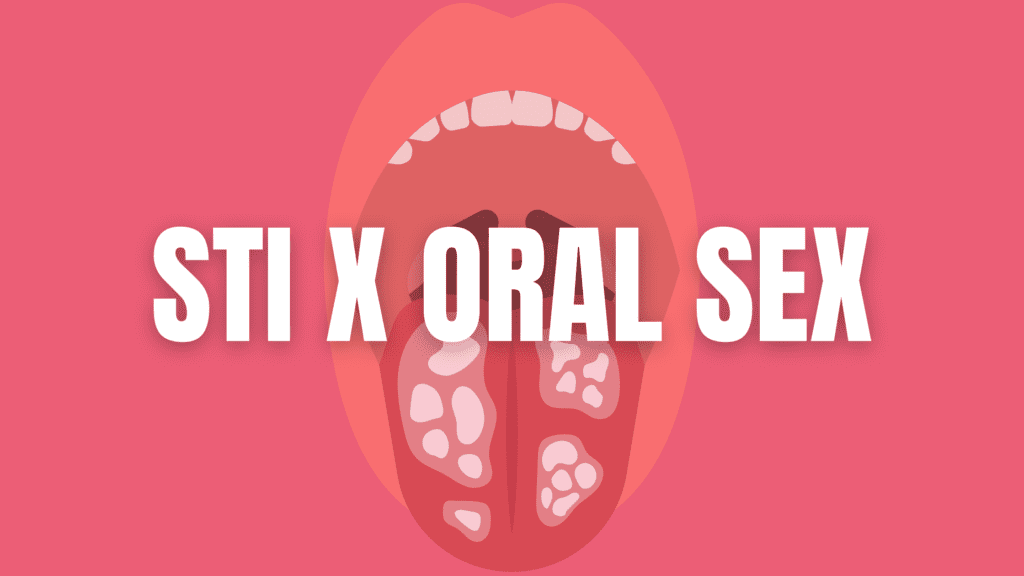Oral sex is often seen as a safer alternative to vaginal or anal intercourse, but that doesn’t mean it’s completely risk-free. Yes, you can get a sexually transmitted infection (STI) from oral sex, and it’s important to understand the risks involved to protect yourself and your partner(s). In this blog, we’ll dive deep into how STIs can be transmitted through oral sex, the symptoms to watch out for, prevention tips, and when to get tested.
How Are STIs Transmitted Through Oral Sex?
Oral sex involves contact between the mouth and the genitals (or anus). During this act, STIs can be transmitted through:
- Saliva: Some infections, like herpes, can spread through saliva if there are active sores.
- Blood or Open Wounds: If there are cuts, sores, or abrasions in the mouth or on the genitals, the risk of transmission increases.
- Bodily Fluids: Infections like gonorrhea or chlamydia can spread via semen, vaginal fluids, or anal secretions.
Which STIs Can You Get from Oral Sex?
Here’s a list of common STIs that can be transmitted through oral sex:
- Herpes Simplex Virus (HSV):
- Oral herpes (HSV-1) can be passed to the genitals, and genital herpes (HSV-2) can be passed to the mouth.
- Symptoms include cold sores, blisters, or ulcers.
- Human Papillomavirus (HPV):
- HPV can cause genital warts or lead to oral cancers in rare cases.
- It’s often asymptomatic, but vaccination can reduce the risk.
- Gonorrhea:
- Oral gonorrhea, often called “throat gonorrhea,” can cause a sore throat, but many people are asymptomatic.
- Chlamydia:
- Though less common, chlamydia can infect the throat, causing mild irritation.
- Though less common, chlamydia can infect the throat, causing mild irritation.
- Syphilis:
- Syphilis sores can appear in the mouth, genitals, or anus, and the infection spreads through direct contact.
- Syphilis sores can appear in the mouth, genitals, or anus, and the infection spreads through direct contact.
- HIV:
- While the risk is lower compared to vaginal or anal sex, HIV can still be transmitted through oral sex if there are cuts or sores in the mouth.
- While the risk is lower compared to vaginal or anal sex, HIV can still be transmitted through oral sex if there are cuts or sores in the mouth.
- Hepatitis A, B, and C:
- Hepatitis viruses can be transmitted through oral-anal contact (rimming).
- Hepatitis viruses can be transmitted through oral-anal contact (rimming).
- Other STIs:
- Trichomoniasis, Mycoplasma genitalium, and even pubic lice (crabs) are possible but less common.
Symptoms to Watch For
STIs acquired through oral sex might not always show symptoms, but here are some signs to look out for:
Oral Symptoms:
- Sore throat that doesn’t go away
- White patches or sores in the mouth or throat
- Swollen lymph nodes
- Painful blisters or ulcers on the lips
Genital Symptoms:
- Itching or burning
- Pain during urination or sex
- Unusual discharge
Systemic Symptoms:
- Fever
- Fatigue
- Swollen lymph nodes
If you notice any of these symptoms, seek medical advice as soon as possible.
How to Reduce the Risk of Getting an STI from Oral Sex
While no method is 100% effective, there are several steps you can take to significantly reduce your risk:
- Use Protection:
- Use condoms for oral-penile sex and dental dams for oral-vaginal or oral-anal sex.
- Communicate with Your Partner(s):
- Have open conversations about STI testing, history, and protection methods.
- Have open conversations about STI testing, history, and protection methods.
- Get Vaccinated:
- Vaccines for HPV and hepatitis A and B can protect against these infections.
- Vaccines for HPV and hepatitis A and B can protect against these infections.
- Avoid Oral Sex During Outbreaks or Symptoms:
- If you or your partner have sores, blisters, or other symptoms, avoid oral sex until cleared by a doctor.
- If you or your partner have sores, blisters, or other symptoms, avoid oral sex until cleared by a doctor.
- Practice Good Hygiene:
- Regular dental care and avoiding oral sex if you have cuts or sores in your mouth can reduce risks.
- Regular dental care and avoiding oral sex if you have cuts or sores in your mouth can reduce risks.
- Regular STI Testing:
- Regular testing ensures you and your partner(s) can take action early if needed.
When to Get Tested
You should consider STI testing if:
- You’ve had unprotected oral sex.
- You or your partner show symptoms of an STI.
- You’re starting a new sexual relationship.
- You or your partner have multiple partners.
Tests may include throat swabs, urine tests, or blood tests, depending on the suspected infection.
Why Education and Prevention Matter
Understanding that oral sex isn’t entirely risk-free is key to making informed decisions about your sexual health. By taking precautions, getting tested regularly, and being aware of the symptoms, you can significantly lower your risk of contracting or spreading STIs.
Remember, prevention isn’t about fear, it’s about empowerment. Protecting yourself and your partner(s) ensures that your sexual experiences remain healthy and enjoyable.
Final Thoughts
Yes, you can get an STI from oral sex, but the risks can be minimized with the right precautions. Open communication, regular testing, and safe-sex practices go a long way in maintaining your sexual health.
If you’re unsure about your risk or symptoms, don’t hesitate to consult a healthcare professional, they’re there to help without judgment.

